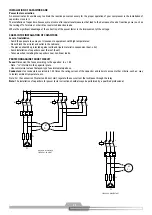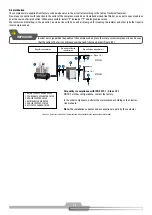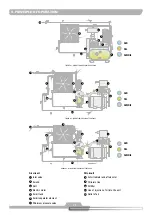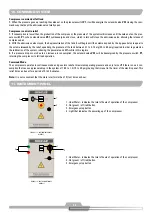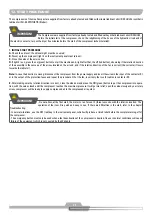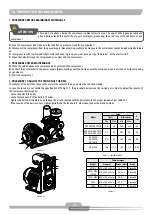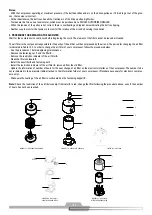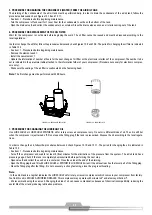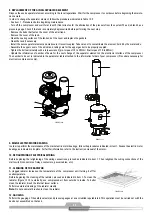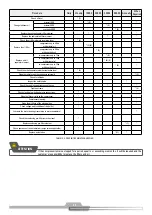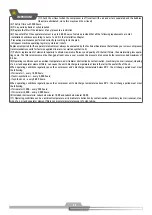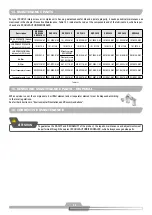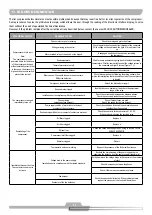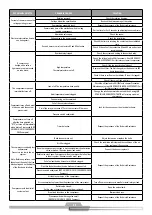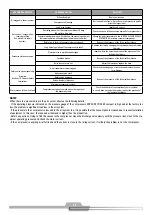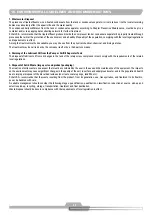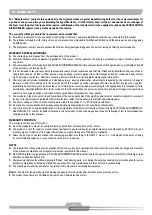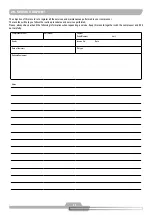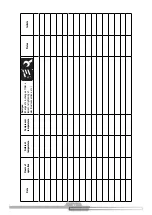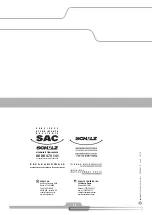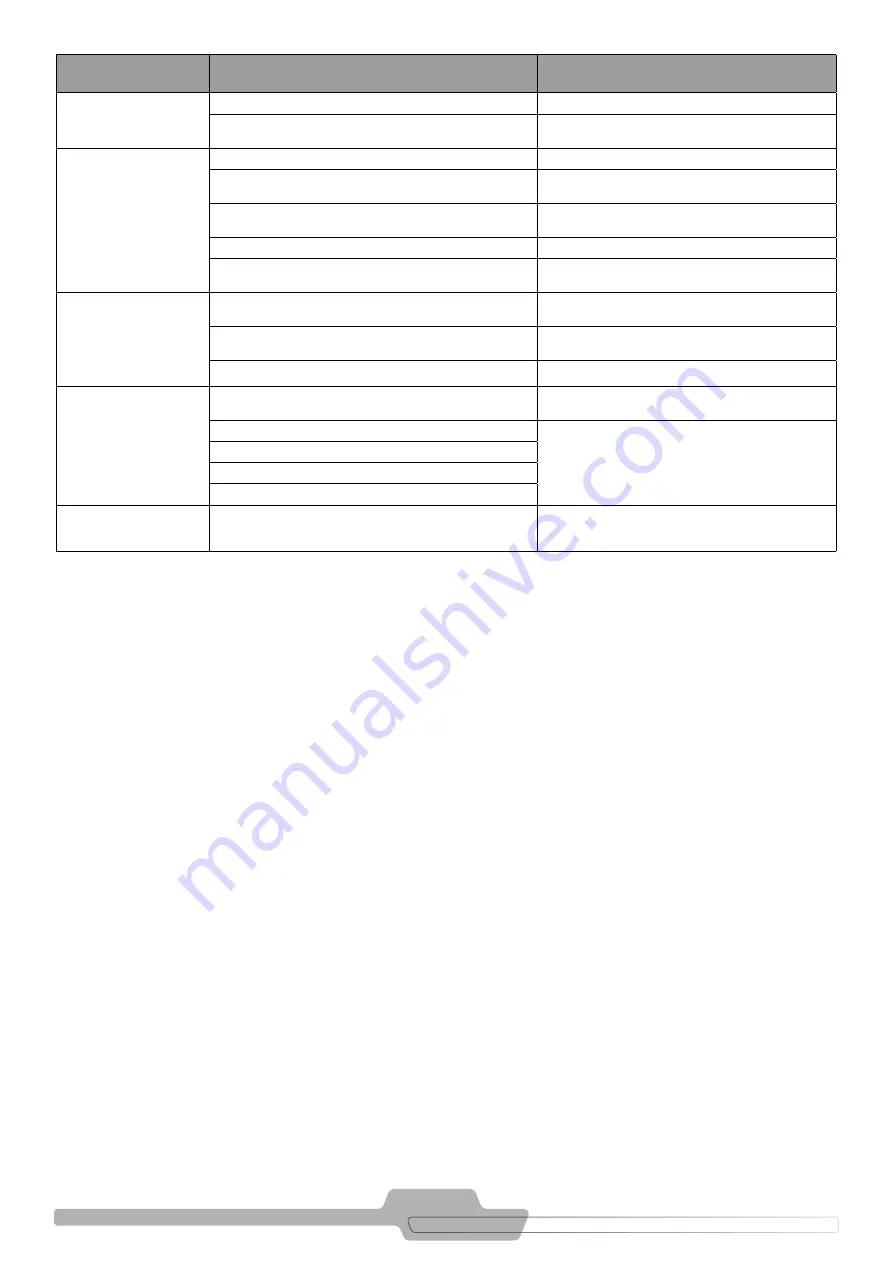
89
NOTES
When there is a pressure drop in the air system, observe the following details:
- If the operating pressure indicated on the pressure gauge of the compressors SRP 3005 TO 3040 compact is high and at the factory too
low, the problem is significant load loss in the air system.
- If the pressure in the compressor is low and in the air system too, it is possible that the consumption increased due to recent installation
of equipment. In this case, the required air demand is higher than the production.
- Before any actions, trying to find the causes in the compressor, close the discharge valve slowly until the pressure rises close to the ma-
ximum operating pressure and check the motor current.
- If the compressor is aspiring air at full load and the current is close to the rating current, it is likely the problem is not the compressor.
OCCASIONAL DEFECTS
PROBABLE CAUSES
SOLUTION
Oil dragged to the air system.
Oil level too high.
Remove oil excess.
Compressor oil foaming.
Fast load and relief cycle. (Turn off some compressor in parallel
or install a larger tank).
Excessive oil consumption,
requiring refilling.
(Too much oil in the air
system).
Leak in the system.
Identify and correct.
Operating pressure of the compressor below 3.4 barg
(50 psi) for a long time.
Check the cause of the excessive demand of compressed air.
Separator element damaged. (In this case, the pressure gauge that
indicates restriction will virtually not indicate any restriction).
Change the air/oil separator and the LUB SCHULZ/LUB SCHULZ
SYNTHETIC oil for rotary screw air compressor.
Return line of the air/oil separator element clogged.
Request the presence of the Technical Assistance.
Long time of operation of the compressor in relief.
Optimize the time by changing the command mode or adjusting
the relay.
Excessive vibration or noise.
Electric motor or unit bearing damaged.
Identify where the noise is and request the presence of the
Technical Assistance.
Fan blade broken.
Request the presence of the Technical Assistance.
Belts loose or worn out.
Adjust the tension or replace the belts.
Safety valve opens repeatedly.
Attention:
See item 13 - Chapter Safety
Instructions
Air/oil separator element clogged.
Check the pressure gauge of restriction and replace the sepa-
rator element.
Admission valve stuck.
Request the presence of the Technical Assistance.
Safety valve damaged.
Solenoid valve(s) defective.
Minimum pressure valve stuck.
Water excess in the air/oil tank.
Compressor operating too much above the capacity of
the pneumatic tools.
Check the behavior of consumption of your air system.
In case it does not solve the problem, request the presence of
the Technical Assistance.

